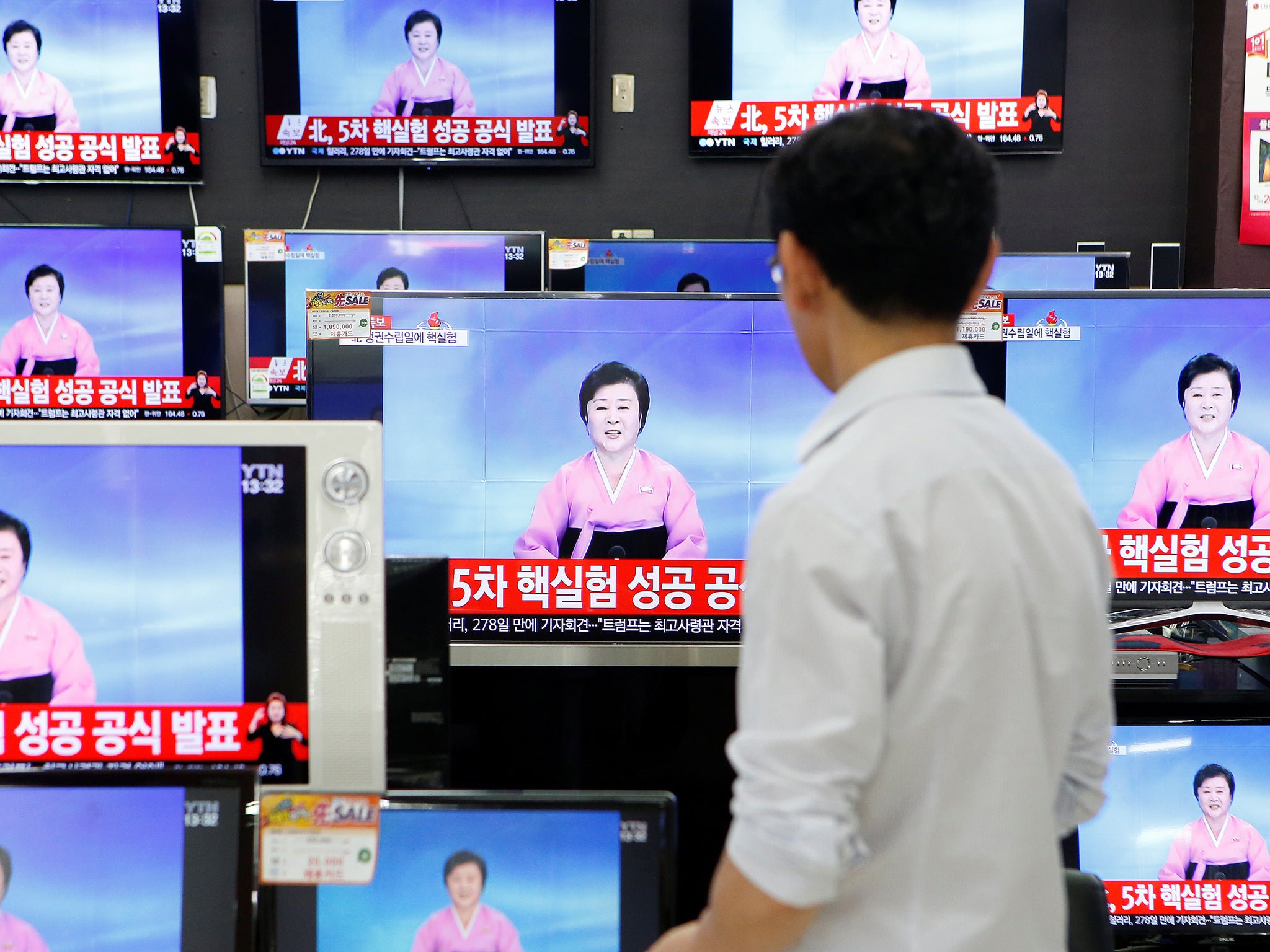North Korea’s sixth nuclear test could come ‘at any time’
The speculation comes three days after North Korea conducted its fifth atomic bomb explosion

Your support helps us to tell the story
From reproductive rights to climate change to Big Tech, The Independent is on the ground when the story is developing. Whether it's investigating the financials of Elon Musk's pro-Trump PAC or producing our latest documentary, 'The A Word', which shines a light on the American women fighting for reproductive rights, we know how important it is to parse out the facts from the messaging.
At such a critical moment in US history, we need reporters on the ground. Your donation allows us to keep sending journalists to speak to both sides of the story.
The Independent is trusted by Americans across the entire political spectrum. And unlike many other quality news outlets, we choose not to lock Americans out of our reporting and analysis with paywalls. We believe quality journalism should be available to everyone, paid for by those who can afford it.
Your support makes all the difference.North Korea is capable of detonating another nuclear device at its main atomic test site any time it chooses, Seoul officials have said, as the United States reportedly planned to send two nuclear-capable supersonic bombers to the South in a show of force against Pyongyang.
The speculation about any new nuclear test by the North comes three days after it conducted its fifth atomic bomb explosion. Friday’s test was the North’s most powerful to date, and its claim to have used “standardised” warheads has sparked worries it was making headway in its push to develop small and sophisticated warheads to be topped on missiles.
After the test, the North’s nuclear weapons institute said it will take unspecified measures to further boost its nuclear capability, which analysts said hinted at a possible sixth nuclear test.
South Korea’s Defence Ministry spokesman Moon Sang Gyun said Monday that South Korea and US intelligence authorities believe North Korea has the ability to detonate another atomic device anytime at its main Punggye-ri nuclear test site, where the five previous atomic explosions took place.
Moon refused to say what specific evidence pointed to another possible North Korea test. On Friday, South Korea’s top military intelligence officer, Kim Hwang Rok, said that North Korea has two or three unused tunnels in the Punggy-ri site where it can conduct an additional test if it wants.
Yonhap news agency, citing unidentified Seoul government sources, reported Monday there were signs the North had finished test preparations in an unused tunnel. Yonhap did not elaborate.
Seoul, Washington and their allies subsequently have vowed to apply more pressure and sanctions on Pyongyang in the wake of its latest nuclear test, the second this year.
But bad weather Monday also delayed a US plan for at least 24 hours to send warplanes from Guam to South Korea, as it has done in the past after major provocations by North Korea.
Yonhap said the US military will try again Tuesday to fly two B-1 bombers, capable of carrying 24 atomic weapons, over its main air base near Seoul. The US military said some aircraft will be deployed Tuesday but declined to disclose what type or how many planes.
South Korea’s military also started talking publicly about its military capabilities, revealing it has retaliation plans involving precision-strike missiles and special operations forces for direct attacks on the North’s leadership in the case of a North Korean nuclear attack.
South Korea has previously avoided harsh rhetoric against North Korea and its leader Kim Jong Un but after Friday’s nuclear test, South Korean President Park Geun-hye said Kim’s “mental state is spiralling out of control” and that his government has “fanatic recklessness.”
Yonhap, citing an unidentified military source, said Sunday that the plan would turn areas in Pyongyang, where the North’s war commanders were likely to hide, into ashes and “eliminate those places from the map permanently.” South Korea’s Defence Ministry said it would not comment on the report.
North Korea’s pursuit of missiles and nuclear weapons is one of the most intractable foreign policy problems for the US and South Korea. Diplomacy has so far failed. Six-nation negotiations on dismantling North Korea’s nuclear program in exchange for aid were last held in late 2008 and fell apart in early 2009.
The Korean Peninsula remains technically at war, as the 1950-53 Korean War ended in an armistice, not a peace treaty. The United States has about 28,500 troops in South Korea.
Join our commenting forum
Join thought-provoking conversations, follow other Independent readers and see their replies
Comments